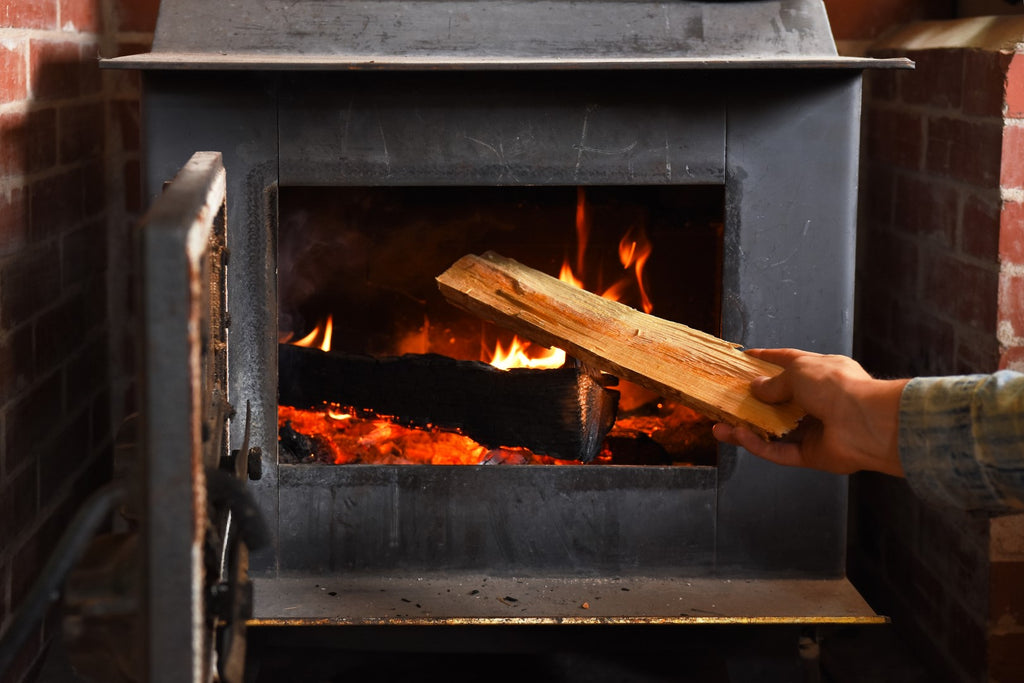A History On Wood Burning Stoves

The warmth, reassurance and aesthetic appeal of wood burning stoves are truly timeless. Which is why they can slot effortlessly into contemporary interior designs, as well as traditional and ‘country-style’ property layouts. Did you ever stop to consider the history of stoves? How did we go from burning wood in open fires, to containing this sustainable energy source within modern, stylish and energy-efficient equipment?
Wood burning stove origins
The word ‘stove’ is believed to come from “stofa”, which means enclosed space. Humans began to create equipment to house and contain fires – fireplaces – thousands of years ago. In fact, on the island of Malta, there’s a fireplace in a temple that’s believed to have been built 3,600 years ago.
However, the wood burning stove origins are believed to date back to the 16th century. Before that, whether you lived in a grand castle or tiny hovel, your family's source of heat and light was right in the centre! Everyone huddled around this pivotal point to cook, chat and keep the chills away. You can picture the scene, with a smoke-filled room and everyone trying to keep the little ones away from the flames.
However, some bright spark had the idea of creating a ‘vessel’ or chamber to hold the fire, and moving it to the side of the room. This also involved venting the smoke away up a chimney. The advantages of putting the family fireplace in a stove were also an improvement in output. The chimney pulls air into the fire to fuel it further, as well as drawing away fumes and debris. Efficient combustion had been invented, and family fires began to get hotter and safer!
The earliest stoves
The earliest fire ‘chambers’ were often a combination of masonry and iron plates. The iron plates helped to disseminate the heat and also provided a sturdy cooking surface. It was a notion that became popular across the developed world. In 1735, a French architect called Francois Cuvilliés used masonry to build a wood fire burner covered by perforated iron plates. This was a “stew stove” to place pans on. Even one of North America’s founding fathers - Benjamin Franklin – got inspired by the idea. In 1744 he tinkered around with ways to create heat efficient cast iron stoves. Of course, the level of society you were at dictated how elaborate your stove was – from plain iron boxes to highly ornate cast iron wood burners to cook on.
Modern manufacture and design
The appliance of science and the capabilities of modern manufacturing have of course changed the appearance of wood burning stoves dramatically over the last centuries. As a method of cooking, they have been rendered largely redundant. However, they have remained a constant factor as they are still a popular focal point – both indoors and for outdoor living. Of course, they have become much safer, cleaner and more energy-efficient.
This has helped to counterbalance some of the myths and misconceptions stoves now face such as concerns about deforestation and air pollution. In fact, wood can be a highly sustainable fuel source, thanks to the regulation and control of forests. As combustion factors – and seals – have been increased dramatically in contemporary stoves, the amount of wood needed to create considerable heat has fallen dramatically.
Also, super-efficient wood stoves are available in many shapes, sizes and designs, making them a versatile solution. Their robust nature also adds to their ability to offer a sustainable source of heat. Some even have ‘self-cleaning’ properties! Innovation on this scale shows that wood burning stoves won't ever go 'out of fashion'.
To find your perfect stove, click here or call us on 01226 816 051.
- Chris Murphy








